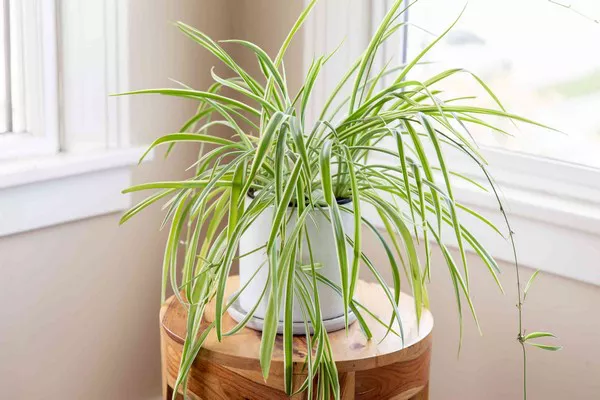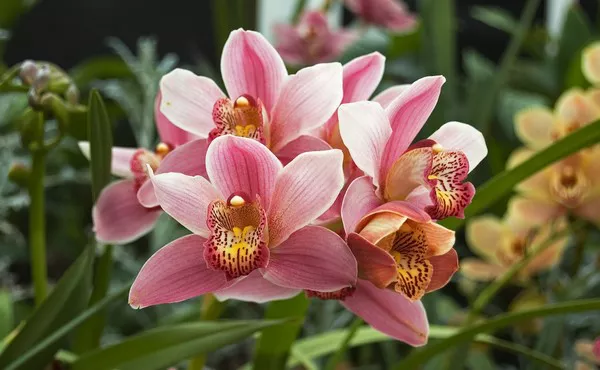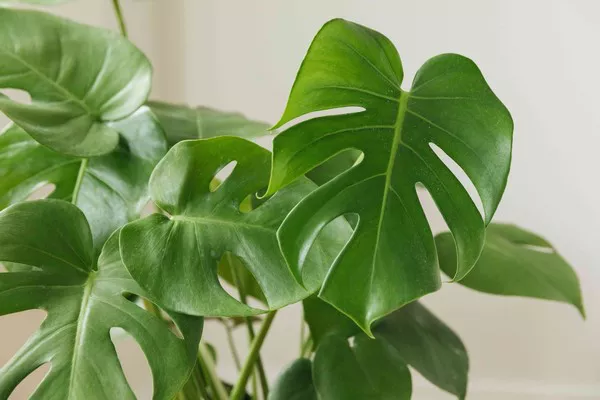The allure of flowers is often tied to their visual beauty, but fragrance is an equally important quality that can captivate the senses and create lasting memories. Throughout history, fragrant flowers have been cherished for their ability to evoke emotions, attract pollinators, and even inspire perfumes and aromatic oils. In this article, we’ll explore the top 10 most fragrant flowers in the world, highlighting their unique scents, cultural significance, and the reasons why they are beloved by gardeners and flower enthusiasts alike.
Top 10 Most Fragrant Flowers in the World
1. Jasmine (Jasminum spp.)
A Symbol of Romance and Purity
Jasmine is renowned for its intoxicating fragrance, which is often described as sweet, floral, and slightly musky. This delicate flower, which is native to tropical and subtropical regions, has been a symbol of love and purity in many cultures. Jasmine flowers are used in perfumes, teas, and essential oils, and their scent is most potent at night, making them a favorite in moonlit gardens.
Varieties and Growing Conditions
There are over 200 species of jasmine, with the most fragrant being the common jasmine (Jasminum officinale) and Arabian jasmine (Jasminum sambac). Jasmine thrives in warm climates and prefers well-drained soil and full to partial sun. It can be grown as a climbing vine, shrub, or container plant, making it a versatile addition to any garden.
2. Rose (Rosa spp.)
The Classic Symbol of Love
Roses are perhaps the most iconic of all fragrant flowers, celebrated for their rich and complex scent that can range from sweet and fruity to spicy and musky. The fragrance of roses has been cherished for centuries, inspiring countless perfumes, soaps, and beauty products. The scent of a rose is strongest in the early morning and late evening, making it a favorite for gardens and floral arrangements.
Cultivating Roses for Maximum Fragrance
While there are thousands of rose varieties, the most fragrant include old garden roses like Damask roses (Rosa damascena) and Bourbon roses (Rosa ‘Bourbon’). These roses thrive in well-drained soil with full sun and benefit from regular pruning and fertilization. Growing fragrant roses requires some care, but the reward is a garden filled with the classic scent of romance.
3. Gardenia (Gardenia jasminoides)
The Essence of Southern Charm
Gardenias are beloved for their creamy white flowers and powerful fragrance, which is often described as sweet, rich, and slightly citrusy. This scent is synonymous with southern gardens, where gardenias are often planted near windows and doors to allow their fragrance to permeate the home. Gardenia flowers are also used in perfumes and as a natural air freshener.
Growing Gardenias Successfully
Gardenias require specific growing conditions to thrive, including well-drained, acidic soil, and high humidity. They prefer partial shade and benefit from regular watering and fertilization. While gardenias can be challenging to grow, their stunning fragrance and beautiful blooms make them a worthwhile addition to any garden.
See Also: Top 10 Most Rare Houseplants in the World
4. Lavender (Lavandula spp.)
The Calming Scent of the Mediterranean
Lavender is cherished for its soothing fragrance, which is often described as floral, herbal, and slightly woody. This aromatic herb is native to the Mediterranean region and has been used for centuries in aromatherapy, cooking, and perfumery. Lavender’s calming scent is known for its ability to reduce stress, improve sleep, and create a sense of tranquility.
Easy to Grow and Versatile
Lavender is a hardy plant that thrives in well-drained soil and full sun. It is drought-tolerant and can be grown in garden beds, borders, or containers. There are many varieties of lavender, with English lavender (Lavandula angustifolia) being the most fragrant. Lavender is also a favorite among bees, making it a valuable addition to pollinator-friendly gardens.
5. Lily of the Valley (Convallaria majalis)
A Delicate and Enchanting Fragrance
Lily of the Valley is a small, delicate flower with a powerful fragrance that is often described as sweet, fresh, and slightly fruity. This enchanting scent has made Lily of the Valley a favorite for bridal bouquets, perfumes, and traditional May Day celebrations in many cultures. The flowers bloom in late spring, filling the air with their delightful fragrance.
Ideal Growing Conditions
Lily of the Valley thrives in cool, shaded areas with moist, well-drained soil. It is a low-maintenance plant that spreads easily, making it ideal for ground cover in woodland gardens. While the flowers are beautiful and fragrant, it’s important to note that all parts of the plant are toxic if ingested, so care should be taken when planting it around children and pets.
6. Tuberose (Polianthes tuberosa)
A Tropical Delight with a Rich Scent
Tuberose is a tropical flower known for its heady, sweet, and exotic fragrance. The scent of tuberose is rich and complex, with notes of creamy floral, spicy, and honeyed undertones. This intense fragrance has made tuberose a popular choice for perfumes and aromatic oils, particularly in India, where it is known as “Rajnigandha” and used in traditional ceremonies.
Growing Tuberose for Fragrance
Tuberose is best grown in warm climates with well-drained soil and full sun. The flowers bloom in late summer to early fall, releasing their potent fragrance in the evening. Tuberose can be grown in garden beds or containers, but it requires some care, including regular watering and protection from frost. In cooler climates, tuberose bulbs can be dug up and stored indoors during the winter.
7. Plumeria (Plumeria spp.)
The Scent of the Tropics
Plumeria, also known as frangipani, is a tropical flower famous for its sweet, fruity, and slightly citrusy fragrance. The scent of plumeria is often associated with Hawaiian leis and tropical gardens, where the flowers are used to create fragrant garlands. Plumeria blooms from spring to fall, filling the air with its delightful aroma.
Ideal Conditions for Plumeria
Plumeria thrives in warm, sunny climates and prefers well-drained soil. It can be grown as a small tree or shrub in gardens or large containers. Plumeria is drought-tolerant and requires minimal care, making it a popular choice for tropical and subtropical gardens. In cooler climates, plumeria can be grown indoors or in greenhouses to protect it from frost.
See Also: Top 10 Most Useless Plants in the world
8. Sweet Alyssum (Lobularia maritima)
A Groundcover with a Sweet Scent
Sweet Alyssum is a low-growing annual plant that produces clusters of tiny, honey-scented flowers. The fragrance of sweet alyssum is light, sweet, and slightly musky, making it a favorite for borders, rock gardens, and hanging baskets. The flowers bloom from spring to fall, attracting bees, butterflies, and other pollinators with their delightful scent.
Easy to Grow and Maintain
Sweet Alyssum is easy to grow and thrives in well-drained soil and full sun to partial shade. It is a low-maintenance plant that can be sown directly in the garden or started from seed indoors. Sweet Alyssum is also drought-tolerant and will continue to bloom even in hot, dry conditions. Its compact size and fragrant blooms make it an excellent choice for edging walkways and filling gaps in the garden.
9. Honeysuckle (Lonicera spp.)
A Vining Beauty with a Sweet Aroma
Honeysuckle is a vining plant known for its sweet, honey-like fragrance that intensifies in the evening. The flowers come in shades of white, yellow, pink, and red, and are highly attractive to bees, butterflies, and hummingbirds. The scent of honeysuckle is nostalgic and often evokes memories of summer evenings in the countryside.
Growing Honeysuckle Successfully
Honeysuckle is a hardy plant that can be grown as a vine, shrub, or groundcover. It thrives in well-drained soil with full sun to partial shade and requires minimal care once established. Honeysuckle is ideal for covering fences, trellises, and arbors, adding both beauty and fragrance to the garden. Some varieties of honeysuckle can be invasive, so it’s important to choose the right species for your area.
10. Magnolia (Magnolia spp.)
A Grand Tree with a Powerful Fragrance
Magnolia trees are known for their large, showy flowers and powerful, lemony fragrance. The scent of magnolia is fresh, floral, and slightly citrusy, making it a favorite for gardens, parks, and landscapes. Magnolia flowers bloom in early spring, filling the air with their delightful fragrance long before many other flowers have started to bloom.
Ideal Conditions for Magnolia
Magnolias thrive in well-drained, slightly acidic soil and full sun to partial shade. They can be grown as large trees or smaller shrubs, depending on the species. Magnolias are relatively low-maintenance and can be grown in a variety of climates, making them a versatile choice for gardeners. The flowers are often used in floral arrangements, perfumes, and potpourris, adding a touch of elegance and fragrance to any setting.
Conclusion
Fragrance is one of the most enchanting qualities of flowers, and the flowers listed above are some of the most fragrant in the world. From the classic scent of roses to the exotic aroma of tuberose, these flowers have captivated the senses for centuries and continue to be cherished by gardeners and flower enthusiasts alike. Whether you’re looking to create a fragrant garden.
You Might Be Interested In:



![10 Most Richest Cities in the United States [Revealed!]](https://www.validdownloads.com/wp-content/uploads/2023/12/Manjula-Pothos.webp)




















